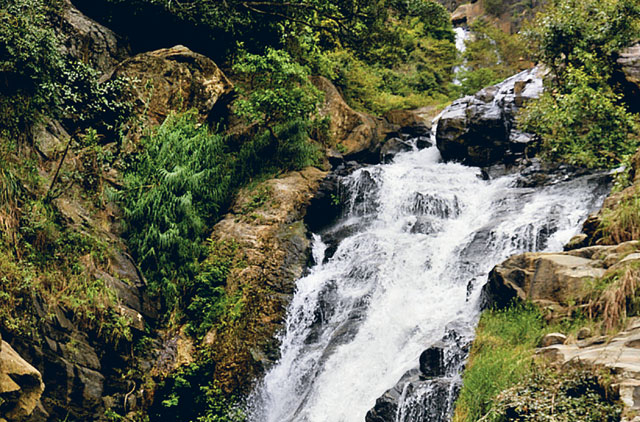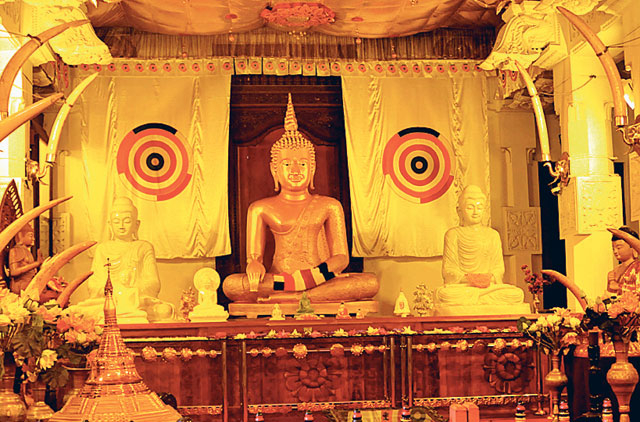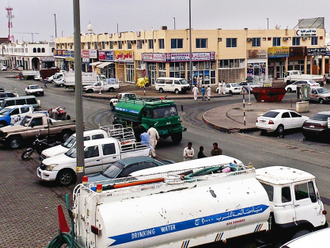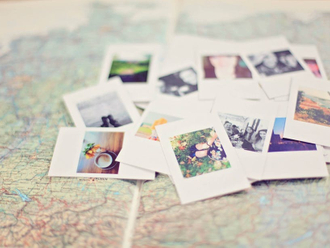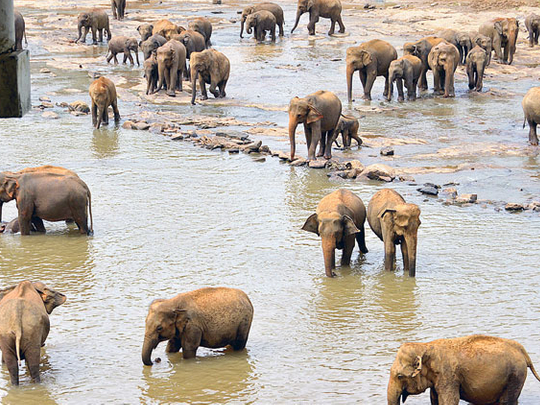
An apprehensively planned holiday to the pearl island in the Indian Ocean turned out to be one of the most pleasant in recent times, as Sri Lanka — freed from the menace of the Tigers — provided immense serenity associated with Buddhism. The flora and fauna were spectacular.
The 11-day Sri Lanka holiday package that we took in Muscat (also available in other parts of the UAE) kicked off from Pinnawela Elephant Orphanage, which is a rehabilitation centre for wild elephants.
Protection for pachyderms
The orphanage was established in 1975 by the Department of Wildlife Conservation on a ten-hectare coconut plantation on the Maha Oya River. It was originally founded as a shelter for orphaned elephants. There are about 100 elephants and they are taken to the river twice daily for a bath. Baby elephants under 3 years are bottle-fed by the mahouts and volunteers.
Sama, who stands on three legs, is the cynosure of all eyes at this orphanage. She is a grim reminder of the internal strife that the country suffered for years. "Sama lost her right foreleg to a landmine laid by Tamil Tiger rebels," a mahout says.
Our next stop was Kandalama Lake and we enjoyed three tranquil days at The Amaya Lake Resort in Dambulla, chosen by our tour operator, Aitken Spence Travels Limited.
We hated our footsteps when we walked on the dry leaves, thus creating an unpleasant sound amid the endless chirping of birds, as the first rays of the Sun pierced the sky from behind the vast Kandalama Lake.
Bird paradise
Sri Lanka, despite being tiny, is home to a range of bird species. This was evident at the sprawling Amaya Lake Resort, where we spotted Sri Lankan junglefowl, the national bird.
There are 433 species of birds in this country. Black-capped bulbul, white-bellied sea eagle, tawny-bellied babblers, dark-fronted babblers and kingfishers were just some of the birds we spotted. Besides, we also saw black-naped hare, giant squirrels and some butterfly species.
After listening to the lovely chirping and twittering of the birds in the morning, we headed to Sigiriya Rock Fortress, also known as Lion's Rock. The elephant ride through marshland as we left Dambulla was an unforgettable experience.
Then we headed for the most popular town, Kandy, where the focal point was the golden-roofed Dalada Maligawa, where the sacred tooth relic of the Buddha is enshrined.
Lush landscape
Our next stop, Nuwara Eliya, also known as Little England, was once home to many British planters. The lovely weather and lush tea gardens made up for the lack of wildlife in this small town, which also has a classic golf course.
Our next stop was Yala National Park, a great place for nature lovers. It is one of the premier eco-tourist destinations in Sri Lanka.
Frolicking in the sunset
We had the opportunity to see a leopard up close as the majestic cat walked through the bushes. According to the park ranger, not everyone was lucky enough to spot a leopard. The rangers have an uncanny network to convey where leopards have surfaced in this 979-square-kilometre park.
A family of wild elephants frolicking in a lake against the backdrop of the setting Sun is a sight that is etched deep in our minds and recorded in our digital cameras.
Although water buffaloes are indigenous to Sri Lanka, Yala National Park is also home to 44 other species, including feral stock, toque macaque, golden palm civet, red slender loris and the fishing cat. There are 46 reptile and 215 bird species in this park.
During the three-hour sea safari near Beruwela, we captured live footage of mammals, reptiles and birds as a private operator took us in a motorised boat.
For those looking for peaceful holidays while taking in the flora and fauna, Sri Lanka is the best and the most affordable place.


